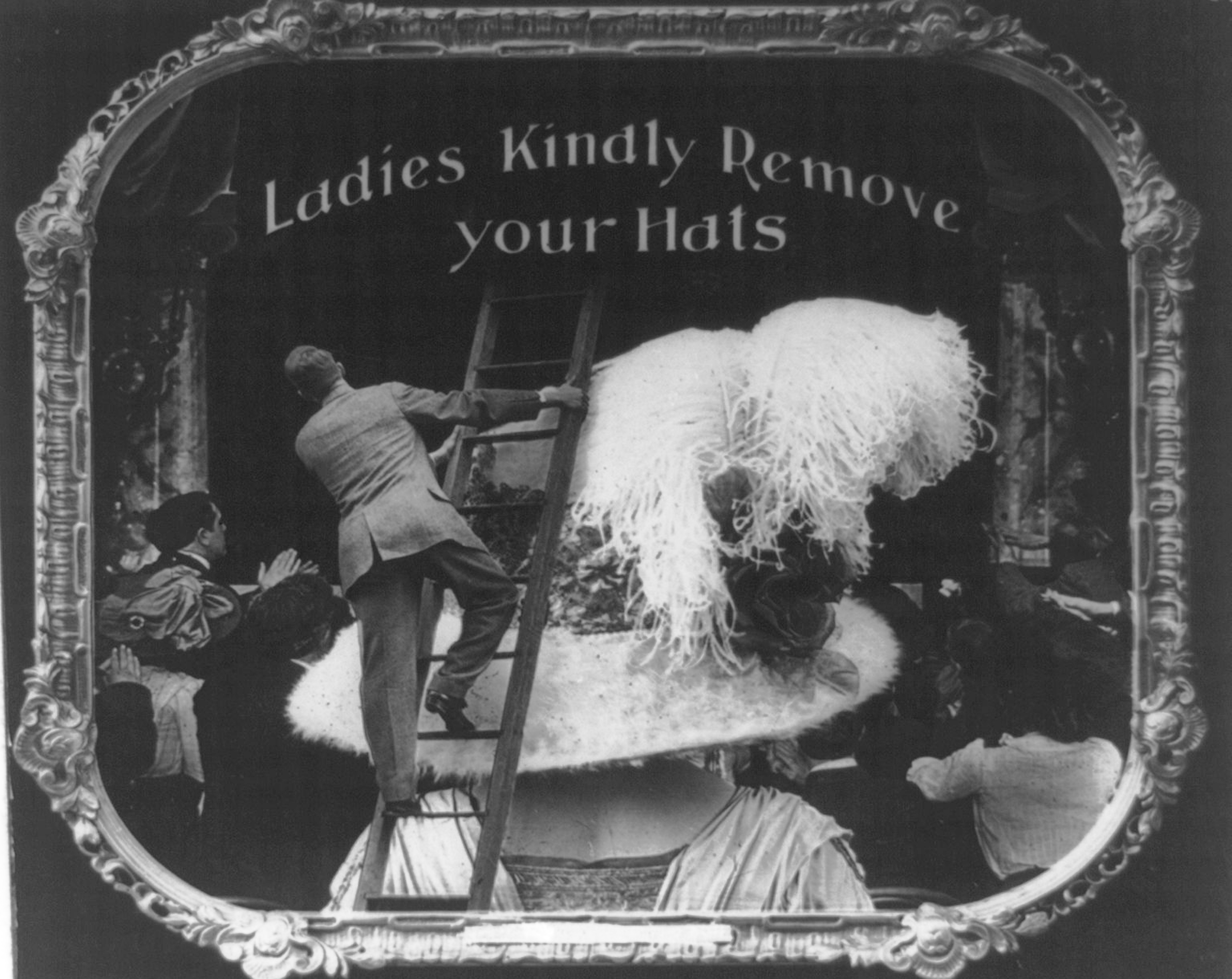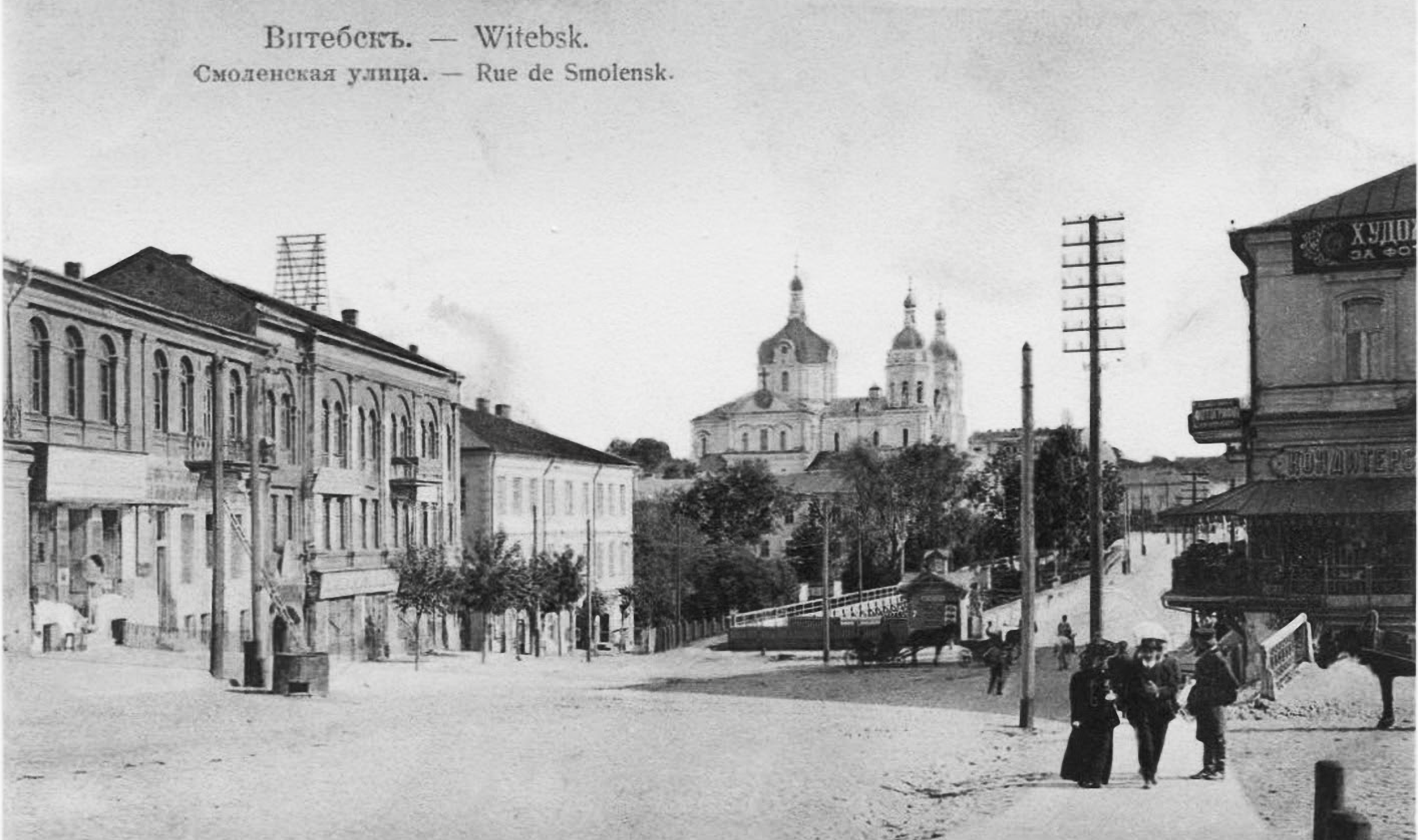A Golden Age of Belarusian Cinemas.
1911-1914
Vitebsk, Part III
The old cinema journals give us rich descriptions of Vitebsk theaters.
While the Kine-Zhurnal correspondent liked the Vitebsk theaters, (s)he did not like was the behavior of certain patrons:
“But perhaps the greatest evil not only in cinemas, but in general at all spectacles is the flaunting of hats, which are not taken off in Vitebsk theaters, despite the room, and in case of crowds, the higher temperature of the room.
If in front of you sits a lady in a hat with bird feathers and wings with the widest brim, or a man of the bourgeois class in a fur hat and sits not quietly, but fidgeting to the right and left, then you will see very little on the screen and leave the cinema with upset nerves and regret for the lost time.
If your neighbor has attached her hat to her hair with a long pin, the sharp end of which sticks out a quarter of an arshin away from her head, then you are in great danger of getting a scratch or a deep prick in the face and eyes. Only our Russian sloppiness, based on the age-old laconic principles of "maybe" and "probably," and the eradication of our own initiative, thanks to the peculiarities of Russian life, do not allow us to take decisive measures against this evil. And yet good examples, which do not hurt to be imitated everywhere, are already available in some cities. Let us point out two of these examples.
At the end of the summer of last 1912, Kursk Governor Muratov banned women armed with long pins in their hats from entering the theaters of the province entrusted to him. And in the theater of the St. Petersburg People's House of Emperor Nicholas II, all spectators, regardless of sex and age, are obliged to take off hats, caps and caps and not to put them on until the end of the performance.
Why do people have a disgusting habit of causing others inconvenience and trouble that they do not wish for themselves? Should we always put the care of ourselves on the shoulders of the authorities?
It seems to me that it is not difficult to think of such a simple life that the owners of theaters (impresarios, entrepreneurs) have every right to demand that visitors in the auditorium take off their hats and, believe me, that in the end the audience will be satisfied with such rational behavior.”1
Kine-Zhurnal Magazine
Ladies announcement
Source: https://www.loc.gov/exhibits/treasures/tr22c.html#obj42
Kine-Zhurnal gave a long report on other theaters in March 1913. It reported that there was a new theater, the Odeon, which had opened in the same place where the wooden building had burned to the ground two years earlier. The new owners were Vitold Lopatsky and Abram Goldman.
"The Odeon was not large in size compared to other Vitebsk theaters, designed for 210 spectators. Ticket prices ranged from 15 to 45 kopecks.
There were two emergency exits.
The order in the theater and the correctness of its functions are supervised by its owners themselves. Very characteristic, by the way, is the placement of the audience waiting for the beginning of the session in two halls: one accommodates the audience of the third seats, while the other serves as a foyer for the audience of the first and second seats.
The 250 seat Original-Bioscope, owned by Mrs. Kharina, had a good location, in the central part of the city, on the most lively place of the main street, but did bad business.
The Illusion, had opened at the beginning of the year across the street. But competition was not the only problem.
The Original-Bioscope… was located on the fifth floor of a large stone house. A narrow and crooked corridor, a poorly and too simply furnished foyer, a relatively small auditorium (22 x 9 arsh.), the absence of any decorations, insufficient ventilation — all this contributed to the fact that the audience left the Original-Bioscope and went to the Illusion.
Therefore, wrote Kine-Zhurnal, the Original-Bioscope had lower ticket prices and was patronized only by the "ordinary" public. It is quite understandable that the audience behaves freely in this theater; vulgar jokes, shallow witticisms, loud laughter, applause for successful pictures, and stamping feet during long intermissions are a common occurrence here.”2
Kine-Zhurnal Magazine
Vitebsk, Smolenskaya street, 1910
Source: https://commons.wikimedia.org/wiki/Main_Page
In September of 1911, the Illusion, owned by a Mr. Zeitlin and Co., closed after six years of operation. Elkin now owned two theaters, the Vulcan and the Giant.3 By October 1911 Mr. Kazarnovsky took over the Illusion, but it was too late to save the theater and it was closed.4
That same month, a new theater was opened (but the name not published), and it appears the excitement reached a Mr. Vyshinka, who asked for permission to build yet another theater, this time to be named the Gloria, and to be located on the premises of the Vulcan, which was now closed.5
In May of 1913, Vitebsk approved the “organization” of a new theater in the city, to be run by Rachel Tsirelson.6
1 Kine-Zhurnal, No. 4, 23 Feb. 1913, pp. 17-20.
2 Kine-Zhurnal, No. 6, 23 March 1913, pp. 25-27.
3 Kine-Zhurnal, No. 18, 23 Sept. 1911, p. 15.
4 Cine-Phono, No. 2, 15 Oct. 1911, p. 48.
5 Cine-Phono, No. 1, 12 Oct., 1913, p. 31.
6 Kine-Zhurnal, No. 18, 25 May 1913, pp. 22.


